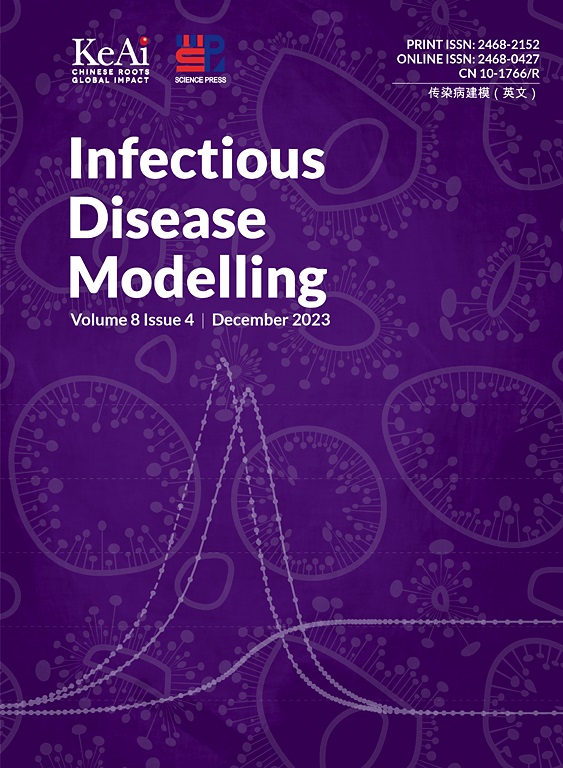量化西尼罗病毒在意大利北部鸟类宿主种群中的传播。
IF 2.5
3区 医学
Q1 Medicine
引用次数: 0
摘要
西尼罗河病毒(WNV)是意大利最具威胁性的蚊媒病原体之一,在过去十年中,意大利记录了数百例人类病例。在这里,我们通过建模框架估计了西尼罗河病毒在艾米利亚-罗马涅地区鸟类种群中的发病率,该模型框架使我们能够最终评估在每个流行季节结束时呈现抗西尼罗河病毒抗体的鸟类比例。我们将SIR模型应用于鸟类学数据,包括2013年至2022年期间收集的18989个属于鸦科物种的标本:每年5月至11月捕获或射击鸟类并检测西尼罗河病毒基因组的存在。我们发现,在7月中旬至8月下旬期间,感染的鸦类被捕获的可能性似乎比易感鸦类平均高出17%,据估计,2018年底的血清阳性率高于其他年份,这与记录的人类感染数量异常一致。由于我们的建模研究,我们量化了鸦群中的西尼罗河病毒感染动力学,尽管它对病毒循环很重要,但研究仍然很少。据我们所知,这是首批提供鸟类感染和免疫定量信息的研究之一,为西尼罗河病毒传播动力学提供了新的重要见解。本文章由计算机程序翻译,如有差异,请以英文原文为准。
Quantifying West Nile virus circulation in the avian host population in Northern Italy
West Nile virus (WNV) is one of the most threatening mosquito-borne pathogens in Italy where hundreds of human cases were recorded during the last decade. Here, we estimated the WNV incidence in the avian population in the Emilia-Romagna region through a modelling framework which enabled us to eventually assess the fraction of birds that present anti-WNV antibodies at the end of each epidemiological season.
We fitted an SIR model to ornithological data, consisting of 18,989 specimens belonging to Corvidae species collected between 2013 and 2022: every year from May to November birds are captured or shot and tested for WNV genome presence. We found that the incidence peaks between mid-July and late August, infected corvids seem on average 17% more likely to be captured with respect to susceptible ones and seroprevalence was estimated to be larger than other years at the end of 2018, consistent with the anomalous number of recorded human infections.
Thanks to our modelling study we quantified WNV infection dynamics in the corvid community, which is still poorly investigated despite its importance for the virus circulation. To the best of our knowledge, this is among the first studies providing quantitative information on infection and immunity in the bird population, yielding new important insights on WNV transmission dynamics.
求助全文
通过发布文献求助,成功后即可免费获取论文全文。
去求助
来源期刊

Infectious Disease Modelling
Mathematics-Applied Mathematics
CiteScore
17.00
自引率
3.40%
发文量
73
审稿时长
17 weeks
期刊介绍:
Infectious Disease Modelling is an open access journal that undergoes peer-review. Its main objective is to facilitate research that combines mathematical modelling, retrieval and analysis of infection disease data, and public health decision support. The journal actively encourages original research that improves this interface, as well as review articles that highlight innovative methodologies relevant to data collection, informatics, and policy making in the field of public health.
 求助内容:
求助内容: 应助结果提醒方式:
应助结果提醒方式:


